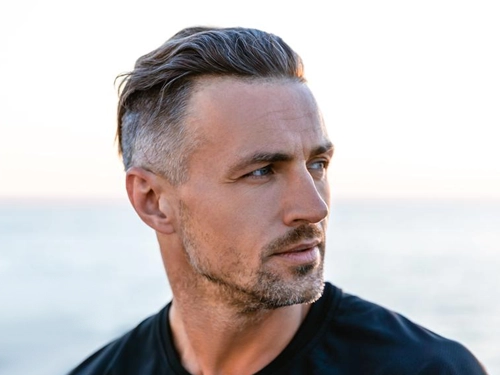
Hair Transplant Turkey is the removal of hair follicles from the regions with different genetic characteristics (strong and resistant to shedding) such as nape and sides of the head and transplanting them to the balding areas.
We call it donor dominant areas which have genetically different characteristics and are resistant to hair loss (nape and side parts). Since their genetics are the same when they are transplanted in other regions, they are not exposed to shedding.
Hair transplant Turkey is not just about transplanting hair follicles into the balding areas. It is desired to achieve a natural and original appearance in hair transplant.
It is the command on the details that makes difference in hair transplantation. For example, the design of the hairline and recess on the forehead, the direction of the transplanted hair also differ regionally. There are many details in hair transplant procedure that changes the results, such as transplanting hair follicles in the direction of hair growth. Otherwise, we may encounter the "grass man" appearance that is mostly seen.
In Hair Transplant Turkey, many methods are used and new methods are being developed every other day Hair transplant operation is divided into categories according to the donor area where hair follicles are removed, the transplant area where follicles are transplanted and the procedures to be applied. The fue hair transplant method is used the most commonly. Fue hair transplant also contains various methods and techniques such as fue revision transplant, fue hair transplant to temples, hair transplant from the beard, and hair transplant from the chest hair.
Although the causes of hair loss are known, people have difficulty finding a permanent solution. Herbal methods and drug solutions that are heard by others or friends' advice often result in failure. Unfortunately, many alternatives that are offered under the title of "herbs for baldness" and "herbal solution for baldness" can only be a part of the problem.
Many methods such as the baldness vaccine have been used in the treatment of baldness, but they have generally caused the problem to increase much more. Thanks to new technology and techniques, it has become possible to treat baldness. Hair transplantation is completed in a few hours under comfortable, sterile conditions and with minimum pain with local anesthesia.
Hair Transplant in Turkey, many hair transplant techniques are applied and new ones are also added every day. There will be some terms and search titles that you will frequently encounter according to the hair removal method, the region where they are removed, and the place where they are transplanted. Fue hair transplantation is the most searched method among these main topics. Fue hair transplantation is the most popular method today, and fue eyebrow transplantation and due eyelash transplantation methods are popular as well. We also successfully apply hair transplants from body hair and hair transplant on burn scars.
There are two methods of hair transplant: FUT (Follicular Unit Transplant) and FUE (Follicular Unit Extraction). The best option for you will depend on your personal needs and your doctor's recommendations.
FUE hair transplant is a hair transplant method that has been used for the last 15 years, based on extracting hair follicles individually from the nape area without doing any incision and then transplanting them to the required areas. FUE hair transplant method has created a significant increase in the demand for hair transplants.
FUT hair transplant is the process of removing a strip of the hairy area from the nape, and then transplanting the hair follicles on the strip of this hairy area to the required areas. The biggest disadvantage of this method is that it causes scarring and a bald area on the nape where the scalp is removed.
Hair transplantation may last for 4-10 hours depending on the number of hair follicles to be transplanted. This period may be shorter according to the number of practitioners in the team and their experience. Generally, a maximum of 4000-4500 follicles (hair grafts) are transplanted in a single session. The number of follicles (hair grafts) that can be transplanted in a single session will vary according to the hair density in the nape.
After hair transplantation, the phase that is called “shock hair loss” ends in the second month and the hair grows by 60-70% in the 6th month.
Hair transplant cost Turkey varies depending on the transplant area, preferred donor area, and the hospital where hair transplant will be performed (operating room or examination room). Please contact us for detailed information about organic hair transplant cost, hair transplant cost 2025.
Since hair loss and baldness can be seen in all ages and genders, hair transplantation is performed regardless of age and gender. Two main factors determine the success of hair transplant procedures. The first is the condition of the hair, the other is the experience, equipment, and competence of the team which makes the operation. The healthier and denser the hair in the donor area is (nape and side parts from which the hair is taken),the more success is achieved in the hair transplant. Condition of the scalp in the transplant area is also important in hair transplant. If there is no scar in the recipient area (no previous burns, accidents, incision marks) and the person has not previously undergone a hair transplant, the operation becomes more successful. While searching for “the best hair transplant Turkey” or “the best hair transplant physician in Turkey”, you should also consider whether you are suitable for a hair transplant.
We perform hair transplantation mostly for people who experience male pattern hair loss. The reason for hair loss in male pattern hair loss is the male hormone (testosterone). Productive cells around the hair follicle die over time with the effect of testosterone. Hair transplantation is the only permanent treatment method in these patients. If the patient has scars on the scalp caused by previous accidents, burns, and treatments, hair transplantation can be performed after circulatory system control. However, the success of transplantation is less in these patients.
When looking at the person who wants to have a hair transplant, if thescalp begins to appear between the hair, the rate of shedding is over 50%. Hair transplantation is the recommended treatment for these people. It is necessary to check whether hair loss continues in men before the age of 35. If hair loss continues, the patient is told that the second session of hair transplantation should be done again.
As we have mentioned before, the first requirement for people to undergo hair transplantation is whether there area sufficient amount and quality of hair on the back and side parts of the head.
On the other hand, people who are suitable for hair transplantation are those who have enough hair on the sides and back of their head. Both FUT and FUE methods can be used in these people. Another candidate group for these proceduresis those who have a sufficient amount of healthy hair in their chest, legs, etc. The hair transplant method used in thesepeople is the "Fue hair transplant method". While many people were rejected by saying that they are not suitable for hair transplantation, today there has been a tremendous increase in both our operation rates and the quality of the procedures with the developing techniques.
Hair loss is a common condition in both men and women, and hair transplant methods have developed seriously in recent years. When people who suffer from hair loss or baldness apply for hair transplantation, we examine if there is any medical reason for hair loss. If there is a diagnosedreason for hair loss, its treatment is made first and then hair transplantation is performed.
Hair transplantation is a surgical procedure that should be performed under operating room conditions. Before the hair transplantation, we examine the patient and the scalp, perform the necessary hair analysis, and determine the type of baldness. As a result, the approximate amount of grafts and the number of sessions are determined. Our patients who want to have hair transplantation frequently ask whether we can give them price information if they send us their photos. As we always indicate,the best is to have a face to face interview and make a detailed examination of your scalp. The phenomenon which we call hair restoration does not only cover hair transplantation. It also includes specialized topics such as tissue expansion and flaps. It would be best for you to choose a physician who can also perform these types of procedures.
In our first interview, you will be asked some questions about the onset of your complaints, hair condition in your family, and whether you have previously undergone any procedure because of hair loss or baldness, and the condition of your hair will be examined in detail.We will determine your expectations from hair transplantation and choose the most suitable treatment method for you.
You will also be asked about your medical history (previous surgeries, current illnesses). You are asked whether you bleed for a long time when you have a cut (coagulation disorder),whether your cuts heal by leaving scars (hypertrophic scar, keloid),whether you take blood thinners and you smoke a cigarette. The number of grafts to be transplanted and anesthesia type are determined according to the extent of the operation.
If there is not enough hair on the nape, hair transplantation can be done with body hair. Disadvantages of hair transplantation from body hair are as follows:
The appropriate donor areas for hair transplantation are the hairy areas on the nape and above the ears.
Frequently asked questions about pre-operative and post-operative periods of hair transplantation;
A thin layer of scabbing is seen on the scalp after hair transplantation. These scabs usually fall off in a week by washing the hair every day as described. Our patients use a hat during this period and can return to their daily lives and even work. In the 3rdmonth after hair transplantation, the transplanted hair begins to grow and it regains normal hair physiology in the 9th -12th month.
Scabbing is a healing process. Scabbing after hair transplantation takes about one week. The duration of scabbing after hair transplantation can change depending on the person’s cell renewal rate. Scabs should not be scratched in this period. If you do so, the transplanted hair is damaged. Scabs will fall off within 10 days. The recovery period should be completed for the scabs to fall off after hair transplantation. It is known that scabbing is a part of the healing process. If the scabs do not fall off naturally after hair transplantation, hair follicles are also damaged.
Smoking before hair transplantation and smoking after hair transplantation is not advised for two reasons:
Smoking should be reduced 1 week before the hair transplant and completely stopped on the operation day. You should not smoke for a minimum of 1 week after the hair transplant and stay away from the places where other people smoke.
You are recommended not to consume alcohol before and after hair transplantation. Because it disrupts coagulation and negatively affects scabbing and wound healing.
The transplanted hair enters a sudden shedding phase one month after hair transplantation, which we call shock hair loss. The shock hair loss period is natural and expected and takes about 1-2 weeks. It may start later or earlier. Our patients are comfortable as they know that will happen.
The hair strandswe have had since our birth are shed every 5-7 years on average and other hair grows from the same root. For this reason, the hair cycle consists of growth, waiting, and shedding. This cycle is repeated 10-20 times throughout human life. However, since there is a separate cycle for each hair, all our hair does not fall out at once. Sometimes, the shedding hair is replaced by another. Shock loss usually starts in 1-3 months. Depending on the body structure of the patient, shock loss may take up to 1-2 months after hair transplantation. In shock loss, we should avoid blows to the hair transplantation area, eat healthy food and avoid alcohol and smoking. Special procedures such as PRP that will strengthen hair follicles during the shock loss period might be useful.
Patients can return to their work on the 3rd day after hair transplantation. It takes a certain amount of time for the integration of the transplanted hair follicles on the recipient area. You need to protect the scalp from blows during the first two weeks after hair transplantation. You should also stay away from physical activities for 1-2 weeks such as heavy exercise and trauma, friction, excessive sweating, and sexual intercourse.
Medications used after hair transplantation strengthen the transplanted hair and support the existing hair. It nourishes the hair during the shock loss period after hair transplantation and accelerates hair growth after shedding. Drugs that support hair transplantation when taken orally (Not all of these drugs are taken at the same time. All drugs are taken after consulting the doctor).
Ginkgo Biloba (causes vasodilation, that is, it increases the blood coming to the hair rootby expanding the blood vessels!)
Biotin (Vitamin H and Vitamin B7):It reduces shock hair loss, 10mg biotin per day makes hair look fuller. It has positive effects on hair quality.
Xpecia tablet: It is a combined intensive preparation. It contains vitamin B7, ginkgo biloba, zinc, keratin which all nourish the hair follicles.
Pantogar, Priorin:They are claimed to increase hair quality after hair transplantation.
Hairforte Spray, Finasteride (Proscar, Propecia, Dilaprost): It is effective on existing hair, not on the transplanted hair. They are the hair products that support existing hair after hair transplantation.
HGF Spray: It is claimed to increase blood supply by expanding the vessels in the transplant area, increase retention of the transplanted hair and reduce shock loss. It also improves the quality of the existing hairs.
Rogain (spectral) Spray:It does not stop hair loss; it helps existing hair to be stronger and thicker.
Blood Thinners:They are not used very often. After hair transplantation, aspirin may increase bleeding and crusting in the early period. It is not preferred in the early period before and after hair transplantation.
You will encounter manyshampoo and lotion recommendations on the hair transplant forums. In hair transplant forums, people generally make many suggestions under the topics of the use of shampoo after hair transplantation and the use of sebamed shampoo after hair transplantation.
In fact, there is no special shampoo to wash your hair after hair transplantation. You can continue using the shampoo that you were using before hair transplantation, or if you want to use something special, biotin-containing shampoos can be used to improve the hair quality. Alternatively, shampoos that are known to prevent hair loss or block DHT, or shampoos containing saw palmetto can be used. In fact, the key point for choosing the correct shampoo after hair transplantation is to wash the transplanted hair gently without harming the transplanted follicles. For this reason, foam-like shampoos can be preferred.
Because, in the first hair wash after hair transplantation, the shampoo should not damage the hair while foaming. Consequently, there is no need for expensive shampoos at hair transplant centers in Turkey.
During the scabbing period after hair transplantation, water-based gel products that will provide easy removal of the scabs are useful. Since water-based gels are easy to rinse, they are preferred in hair care after hair transplantation.
Patients often ask when they can go to the sea after hair transplantation when they can go to the pool after hair transplantation. Scabs begin to fall off approximately 10 days after hair transplantation. After the shells are shed, you can go into the sea, pool, or sauna, approximately 10 days after the hair transplant.
There is redness around hair folliclesduring the early periodsafter hair transplantation. If the person who has undergone hair transplantation goes out in the sun during this period, the body releases melanin, a dark pigment that will absorb sunlight. Thus, hair roots get darker in color and get tanned. For this reason, it will be best to protect yourself from the sun, stay in the shade and wear a hat after hair transplantation.
Doing sports after hair transplantation is one of the favorite topics of hair transplant forums. It is recommended not to do sports for 7-8 days after hair transplantation. Patients can run one week after the operation. Such sports as bodybuilding and football after hair transplantation can be done by the end of the 3rd week, by protecting the head from any damage.
Stem cells are the productive and restorative cells of our body. Hair stem cell therapy has developedfor taking these advantages of stem cell. Hair stem cell therapy can be made by fat cells. Fat cells are one of the richest tissues of the body in stem cells.
Hair stem cell therapy can be performed with the stem cells separated after 1-2 hours of the procedure. Another popular method of hair stem cell therapy is fibroblast culture, the treatment with stem cells obtained in a laboratory environment from a small piece of skin behind the ear. One of the most effective treatments to delay hair loss and protect and strengthen existing hair is hair stem cell therapy. The purpose of hair treatment with hair stem cell therapy in Turkey is to nourish hair follicles and strengthen the weak follicles to make them reach the length of other follicles.
Before the hair transplantation, fat cells are removed from suitable parts of the bodyand the stem cells are separated. The obtained dense stem cell solution is given to the problematic scalp areas to revitalize weak and thin hair follicles and strengthen the existing ones. The cost of hair stem cell therapy in Turkey is more expensive than other hair treatments such as PRP hair treatment.
Hair stem cell therapy can also be performed to improve the success of hair transplantation andachieve thicker and more quality hair. There are two methods of hair stem cell therapy before hair transplantation.
As a result, hair stem cell therapy can be applied if baldness has not yet occurred, and hair transplant with stem cell therapy can be applied if baldness has started. Those who have hair stem cell therapy say that they achieve revitalized hair in the balding areas and hair loss decreases after having this procedure.
Since sun exposure will damage hair follicles after hair transplantation, it is necessary to wear a hat. You should protect yourself from sunlight for 2-3 weeks. The hat must be made of soft and breathable fabric, and it must be large.
The most frequently asked question about hair transplant is the one “will there be pain during and after hair transplantation”. Since hair transplantation is performed with a combination of sedation anesthesia and local anesthesia, there is no pain during hair transplantation. After hair transplantation, the existing pain is mild enough to respond to simple oral painkillers.
Edema after hair transplantation is a natural and expected condition. It usually begins 2-3 days after hair transplantation and may last for 5-6 days. The main cause of swelling after hair transplantation is edema. During hair transplantation, a serum-containing local anesthetic (lidocaine) is injected into the scalp. In this way, the hair on the scalp can be collected more easily. In order to reduce swelling after hair transplantation, it is recommended not to lie face down and position the head 45 degrees up (lying with 2 pillows) for 3 days after hair transplantation. In order to prevent edema after hair transplantation, we recommend ice compression to the forehead area, avoiding excessive movements, and drinking plenty of water.
After hair transplantation, heavy activities that require spending effort should be avoided. You should avoid heavy works causing excessive sweating. Because excessive sweating will damage the hair follicles. Stress, alcohol consumption, and sexual intercourse should be avoided in the early period after hair transplantation.
Things to do in the first 3 days after hair transplantation; for the first 3 days after hair transplantation, you should lie on your back. On the next day of hair transplant operation, the bandage will be removed in the nape area (donor area) and the dressing will be renewed. After the bandage is removed, a hairband is placed to prevent edema from extending through your eyes. You will receive painkillers and anti-edema medications we have given for you. We do the first washing after hair transplantation on the 3rd day. You should wear a hat and protect hair follicles from any trauma after the operation.
Things to pay attentionto in the first 15 days after hair transplantation in Turkey; going into high-temperature, stagnant water such as pools, saunas, and hammam increases the risk of infection and may damage the hair folliclesfor the first 15 days after hair transplantation. In addition, excessive sweating after hair transplantation is not recommended in this period. Hair should be washed with shampoo and lotions on daily basis.
Things You May Not Know About Hair
False Facts About Hair
Here are the main parts of the recovery period after a hairtransplant:
The first day of hair transplantation:On the next day after the operation, the bandage on the nape is removed. It is summarized again what to do or not.
The second day of hair transplantation: It is a resting period at home.
The third day of hair transplantation: Hair wash is done on the 2nd-3rd day after hair transplant. You wash your hair with warm water and a foaming shampoo as we have described. Washing your hair once a day after that day will make the crusts go away.
The tenth day of hair transplantation: Crusts will completely disappear by daily washing around the tenth day.
The fifteenth dayof hair transplantation: Recovery is finally completed. My teammates will call you and ask if you have any problems.
The first month of hair transplantation: You will have shock hair loss at the end of one month after hair transplantation. We tell our patients that they don’t need to worry about it. New hair will grow from the existing follicles. It is a natural process.
The second month of hair transplantation: Two months after hair transplantation, your hair starts to grow 1-1.5 cm per month.
The first-year of hair transplantation:Your hair iscompletely normal now.
The condition that we call shock loss occurs at the end of one month.
A new hair begins to grow from the 3rd month after hair transplant, following the shock loss period.
In the hair transplant forums, there are manymisinformation that is not based on experience besides accurate information. When you do research about hair transplantation, you see that the best hair transplant center in Turkey, the best doctor performing hair transplantation are the most popular questions. You will receive the most reliable information in a face-to-face interview with your doctor. Ask your doctor where the hair transplant will be done. You should definitely ask whether it will be done in the operating room or in the examination roomand whether an anesthesiologist will accompany the hair transplant.
Hair transplant forums can contain positive and negative comments, as well as false and commercial messages and hearsay information. For this reason, the most accurate information can be obtained from physicians with enough experience in the field.
You can have a bath on the 2nd day after hair transplant.
Since a hair transplant operation is performed under sedation anesthesia, you should be hungry 4-5 hours before and after the operation. We give you intravenous serum during this period.
Hair is cut before hair transplant. So that, hair follicles can be seen clearly.
We make whole blood, biochemistry, bleeding tests, and hepatitis markers before hair transplant.
We take photos before and after the hair transplant. In this way, we have the chance to see success or failure.
A new hair begins to grow three months after a hair transplant. It may take one year to see the final result.
Hair transplant should be performed by an experienced team in an operating room under full sterilization.
During hair transplantation, we go down to millimetric depths in the scalp. For this reason, there is no abundant bleeding. Before the hair transplantation, we prohibit blood thinners.
My friends had hair transplantation in Turkey and they were very satisfied. Therefore I started researching a trusted and professional clinic, this is when I found Dr. Tarik Cavusoglu. It was a tremendously successful and painless process and the results were amazing.
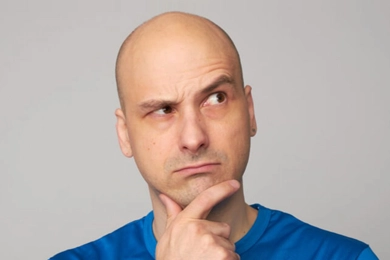 Causes of Hair Loss in Man
Causes of Hair Loss in ManA sizable percentage of males suffer from hair loss, a normal yet frequently upsetting condition. This thorough book explores the many factors that contribute to male hair loss, providing information and und Read More...
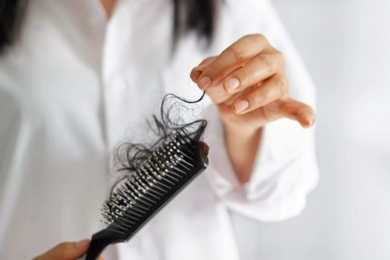 Unveiling the Mystery: Understanding Hair Loss in Women
Unveiling the Mystery: Understanding Hair Loss in WomenOur comprehensive examination of hair loss is a subject that affects a great number of women worldwide. We will examine the various complex causes of hair loss in women in this blog post, including lifestyle Read More...
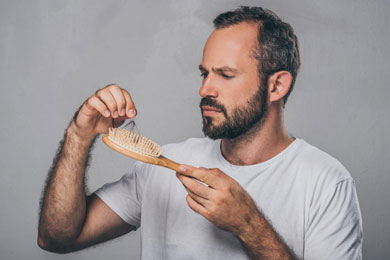 Causes, Remedies, and Prevention of Hair Loss
Causes, Remedies, and Prevention of Hair LossFor both men and women, experiencing hair loss can be upsetting. Numerous factors, such as genetics, hormonal changes, medication, illness, and inadequate nutrition, can cause it. Read More...
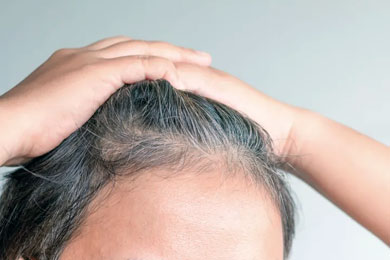 Stress, Anxiety And Hair Loss: Are They Related?
Stress, Anxiety And Hair Loss: Are They Related?Millions of people around the world struggle with the common problem of hair loss. Many people wonder if anxiety and psychological stress can also cause hair loss, which can be brought on by numerous factors Read More...